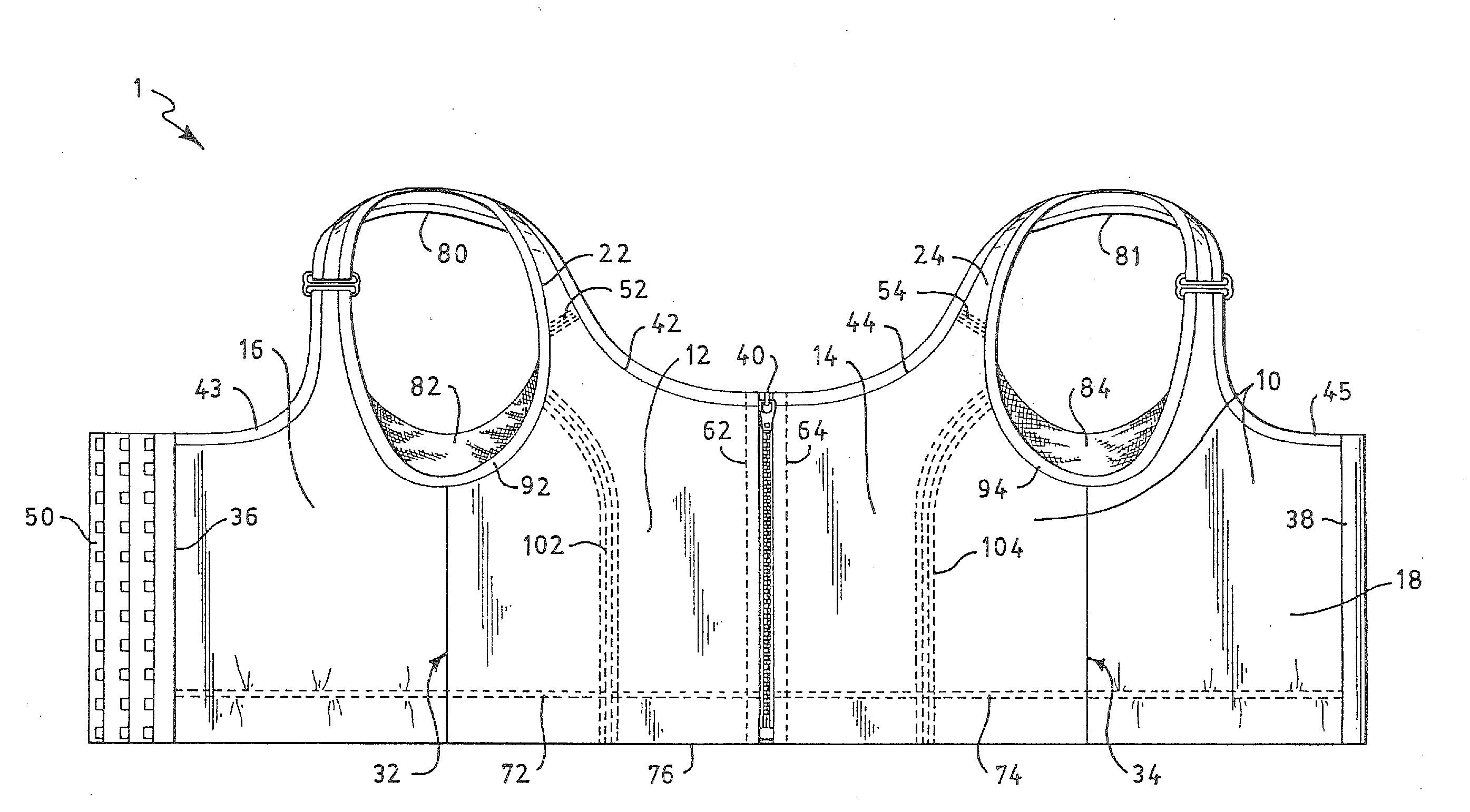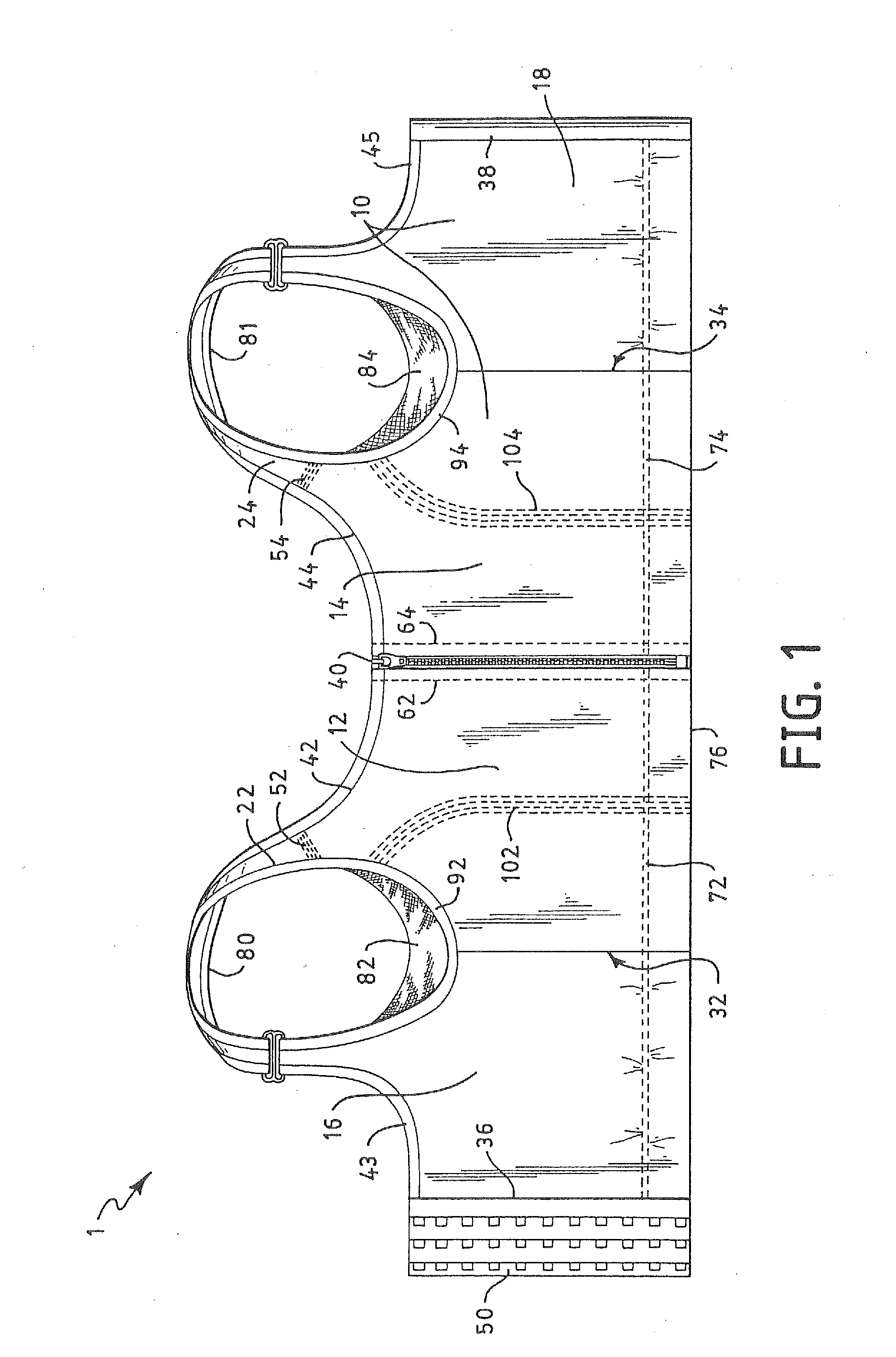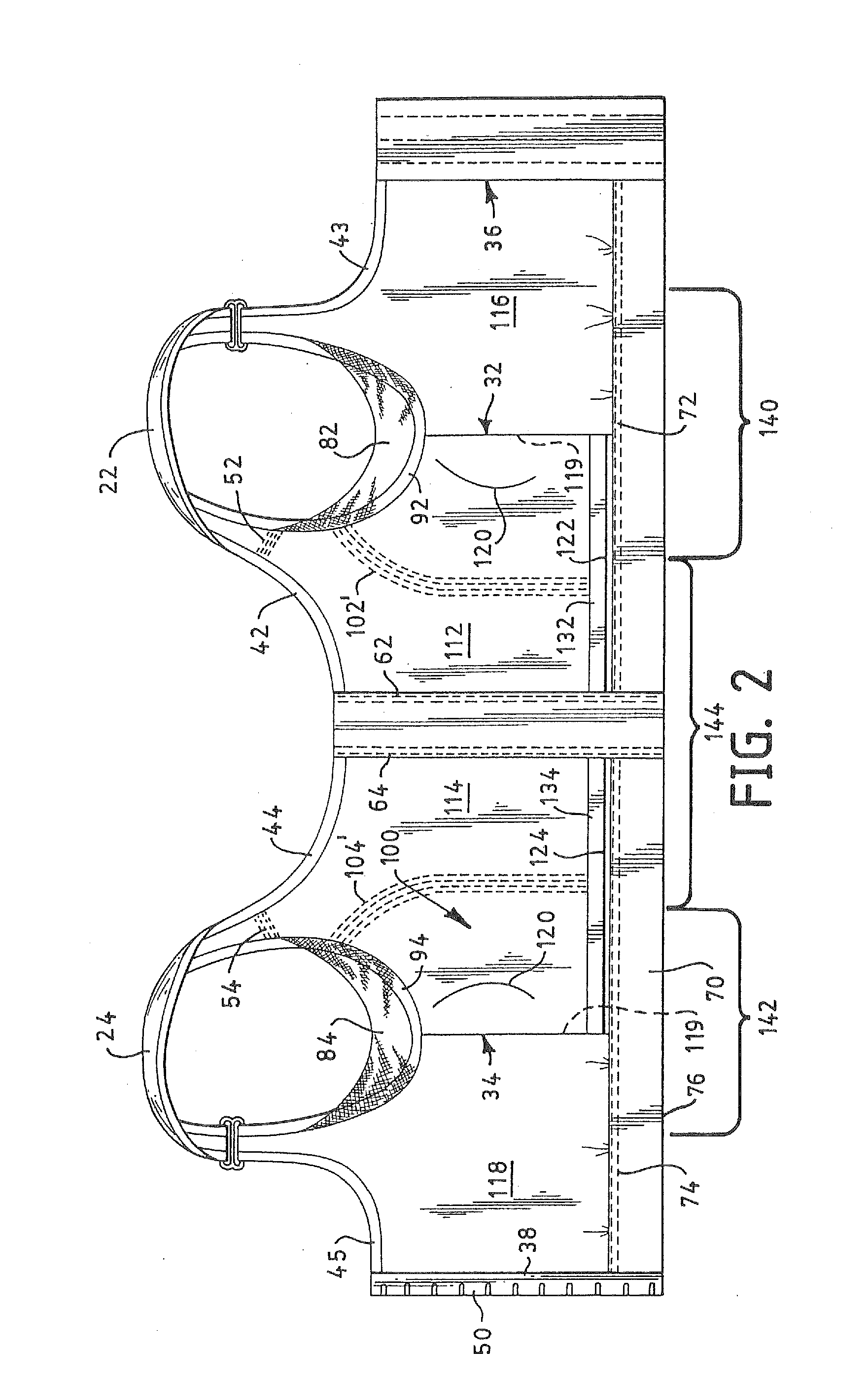Method of Providing Compressive Forces To A Human Torso
a compressive force and human body technology, applied in the field of compression garments and brassieres, can solve the problems of affecting the lymphatic drainage, affecting the lymphatic system, and contributing to lymphatic compromis
- Summary
- Abstract
- Description
- Claims
- Application Information
AI Technical Summary
Problems solved by technology
Method used
Image
Examples
Embodiment Construction
[0025]The present invention is directed to a garment for providing compressive forces to a torso so as to help eliminate or reduce swelling caused by an accumulation of lymph fluid in the torso region. An example of the disclosed invention as designed for a human female torso is depicted schematically in FIGS. 1-5, although it should be understood that the present invention is not limited to this (or any other) particular embodiment, but rather is intended to cover all garments that fairly fall within the broad scope of the appended claims.
[0026]Specifically with reference to FIG. 1, the disclosed compression garment 1 is shown laid out flat, with its outer covering 10 facing up. The outer covering 10 typically is made of a compression fabric, e.g., such as a LYCRA®-spandex blend and generally extends over the outer surface of the entire garment, thereby acting as a sort of unifying “skin” for the garment itself. The compression fabric used for outer covering 10 is selected so as to...
PUM
 Login to View More
Login to View More Abstract
Description
Claims
Application Information
 Login to View More
Login to View More - R&D
- Intellectual Property
- Life Sciences
- Materials
- Tech Scout
- Unparalleled Data Quality
- Higher Quality Content
- 60% Fewer Hallucinations
Browse by: Latest US Patents, China's latest patents, Technical Efficacy Thesaurus, Application Domain, Technology Topic, Popular Technical Reports.
© 2025 PatSnap. All rights reserved.Legal|Privacy policy|Modern Slavery Act Transparency Statement|Sitemap|About US| Contact US: help@patsnap.com



